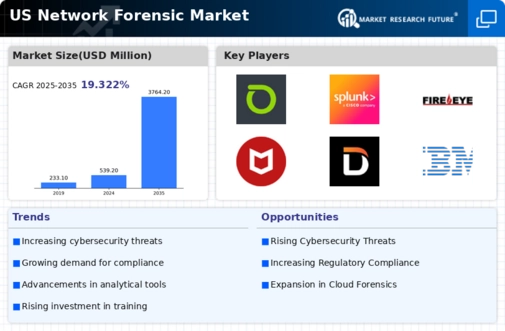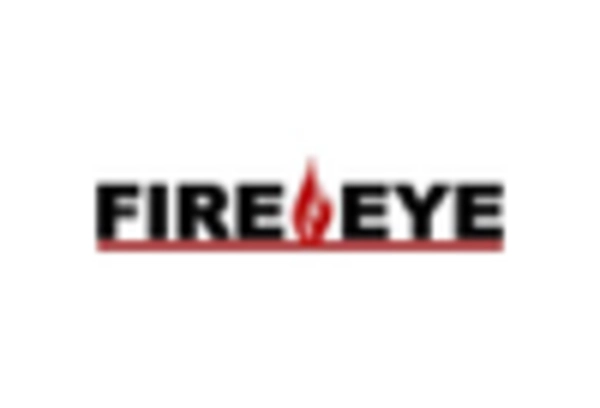Advancements in Technology
Technological advancements play a pivotal role in shaping the network forensic market. Innovations in data analytics, machine learning, and artificial intelligence are enhancing the capabilities of forensic tools, enabling faster and more accurate investigations. The integration of these technologies allows for real-time monitoring and analysis of network traffic, which is crucial for identifying anomalies and potential breaches. As organizations increasingly adopt cloud-based solutions, the demand for sophisticated network forensic tools that can operate in diverse environments is expected to surge. This technological evolution not only improves the efficiency of forensic investigations but also expands the market's potential, as businesses seek to leverage cutting-edge solutions to safeguard their networks.
Growing Regulatory Landscape
The evolving regulatory landscape in the United States is significantly impacting the network forensic market. With regulations such as the California Consumer Privacy Act (CCPA) and the Health Insurance Portability and Accountability Act (HIPAA) imposing stringent data protection requirements, organizations are compelled to enhance their forensic capabilities. Compliance with these regulations necessitates robust network monitoring and incident response strategies, driving the demand for specialized forensic tools. In 2025, it is projected that compliance-related expenditures will account for a substantial portion of IT budgets, further propelling the network forensic market. As businesses strive to avoid hefty fines and reputational damage, the focus on regulatory compliance is likely to remain a key driver in the industry.
Increasing Cybersecurity Threats
The network forensic market is experiencing growth due to the escalating frequency and sophistication of cyber threats. Organizations are increasingly targeted by cybercriminals, leading to a heightened demand for advanced forensic tools to investigate and mitigate these threats. In 2025, it is estimated that cybercrime will cost businesses globally over $10 trillion annually, underscoring the urgency for effective network forensic solutions. As companies strive to protect sensitive data and maintain operational integrity, investments in network forensic technologies are likely to rise. This trend indicates a robust market environment, as businesses recognize the necessity of proactive measures in cybersecurity, thereby driving the network forensic market forward.
Increased Investment in IT Security
Investment in IT security is a critical driver for the network forensic market. Organizations are allocating larger portions of their budgets to cybersecurity measures, recognizing the importance of protecting their digital assets. In 2025, IT security spending in the United States is expected to exceed $150 billion, reflecting a growing commitment to safeguarding networks. This increased investment is likely to encompass a range of solutions, including network forensic tools that provide insights into security incidents and help organizations respond effectively. As the threat landscape continues to evolve, the emphasis on comprehensive security strategies will likely sustain the momentum of the network forensic market.
Rising Demand for Incident Response Services
The demand for incident response services is on the rise, significantly influencing the network forensic market. Organizations are increasingly aware of the need for rapid and effective responses to security incidents, which has led to a surge in the adoption of forensic tools. In 2025, the incident response market is projected to grow at a CAGR of over 20%, indicating a robust appetite for services that can mitigate the impact of cyber threats. This trend suggests that businesses are prioritizing preparedness and resilience, driving the need for advanced network forensic solutions that can facilitate thorough investigations and enhance overall security posture. As a result, the network forensic market is likely to benefit from this growing focus on incident response.

















Leave a Comment